-
Posts
305 -
Joined
-
Last visited
Content Type
Profiles
Forums
Blogs
Gallery
Events
Store
Posts posted by coastie
-
-
It is indeed!!
What was the "Limited Emergency" in 1939?
The limited emergency was in reaction to the war in Europe which even though we were neutral we did provide support to the allies by way of "Lend Lease" and protection of convoys. Also it was necessary cut loose funds and to gear up arms production. The medal was a morale booster to give to the troops something to show for the effort. I guess you can say that this is really the first "gedunk" medal for just being in the service and not really doing anything to earn it.
It's been a while since I had looked at this thread. I forgot to include the "A" that goes on the ribbon bar that denotes Atlantic Fleet service.
0 -
Why is the FOREIGN SERVICE one a different shape to the rest?
Coastie, may I use your images of them on my website please? Hadn't seen them before.
Sure Megan by all means.
0 -
I'm doing good. Staying out of trouble, but what else can you do with no money

The three crowns and Sweden are about my knowledge on equipment and accessories

I hear you.
My limit about Swedish is Volvos and Viggens. Oh yes that great mystery of the road - Saabs
0 -
Hi Charlie !! Long time no see !!
Based on the one picture, it appears I see the Tri-Crown stamp ... I'd guess Sweden.
That's my guess but would like to know what all the stamps mean and why is there just one crown on the front?
How are you doing?
0 -
more of the second bag:


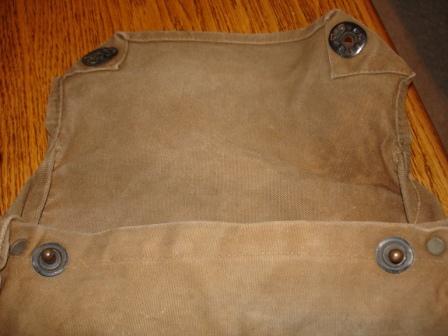


 0
0 -
I picked these up a couple of days ago and have no idea as to country of origin and their use. The first bag (the white one) may be Swedish, there are the three crowns stamp inside the flap.
The second, no clue, no markins other than some stamped numbers, color is a cross between khaki and brown.
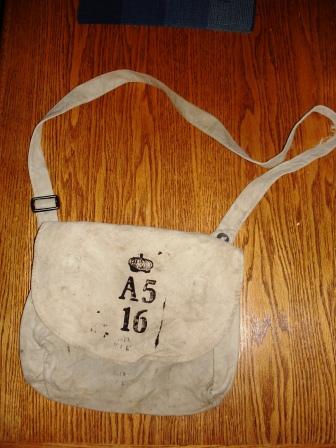






 0
0 -
The collar tab is for NCO level in the German railways-- the Reichsbahn. The cap "vultures" are also, I think, Reichsbahn.
The red sleeve patch with the khukri must surely be from some British Gurkha unit.
The Toulon badge appears to be French naval coastal defense.
I thought the Kukri was out of place. Thanks about the Reichsbahn tip.
0 -
Up next are some flags.
Here are two wehrmacht flags but I'm confused as to the size of the swastika. Is one Wehrmacht and the other Kreigsmarine?

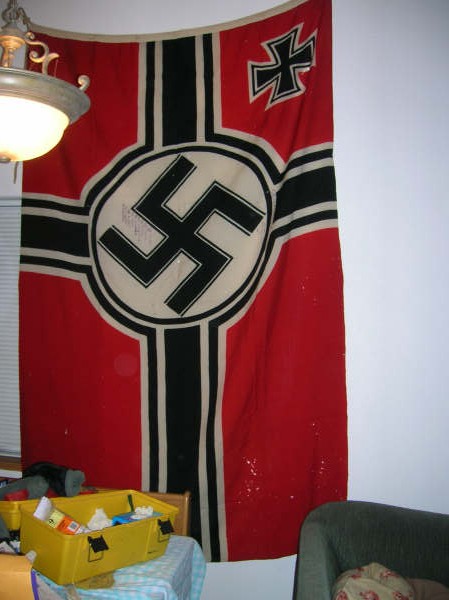

 0
0 -
Next a party arm band but don't know what the collar tab is. The cloth breast eagles(?) Luftwaffe? but why do they look like vultures ?
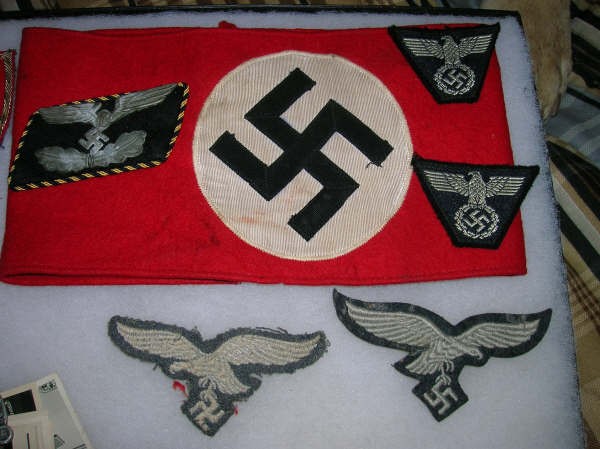
 0
0 -
A co-worker has asked me to identify and if possible place values some items here. The story I'm getting is that this is stuff brought back from the war, maybe yes maybe no. I know the pictures don't show maker marks and such. This may come later but just need a point to start. The only things in the picture here I recognize is the HJ badge and the Frauenschaft badge. Everything else I'm drawing a blank.

 0
0 -
I have not heard any stories of swords in combat in WWII but there is a story floating around (even heard this before the internet) that North Koeans/Communists/Chinese overran a base and a Marine without ammo grabbed a cutlass that was on display and whacked a few of the enemy with it.
I've not be able to confirm this story but it's out there.
0 -
I would like to be!
Paul just find yourself a Lodge and ask. Nobody asks you to join, you have to seek us out.
0 -
Might I suggest laying a piece of thin paper (rice, vellum,tracing paper) and do a pencil rubbing of the engraved writing. In the old days before scanners that's how it was done.
0 -
I heard old Greg is a favorite amongst the sailors....
Ah! must be the new Navy I hear about.
 0
0 -
In the lounge Bear provided this link to a...uhem... "Seacock"
Uh, Chris? Are you all right there buddy?
 0
0 -
Learned old salts,
I have always been interested in the expression "sea cocks" used to descibe some kind of valves supposedly mounted in the lowest regions of a ship (naval or merchantile apparently) which seem to serve the sole function of providing a speedy and neat way of deliberately sinking said ship for reasons unknown. I have also read one or two artilce by various 'salty sea dogs" who claim the entire concept of sea cocks is a myth spawned and propgated by writers of cheap novels, and why would any well-designed ship require a built-in self-sinking device anyway? What would the ship's insurers think of such an installation for instance? As my only experience of the bottoms of ships was working for about one wek in 1967 in a graving dock (where I also learned that practically all ships of whatever size have flat bottoms - this in itself was a revelation to me), I wonder if any of the highly knowledgeable blokes on this board could enlighten the rest of us land lubbers as to the truth or otherwise of the sea cocks legend. I can see that such a device might be useful in a top-secret experimental type of warship that might be in danger of falling into enemy hands and would have need of a rapidly functioning self-scuttling capability, and perhaps some kind of valves might be handy for purging some difficult to get at bilger water deep within the bowels of a ship in dry dock perhaps (something akin to the corks found in transom of some dinghies and small yachts), so any htopughts on this matter would be of great interst to me.
DAvid Duxbury
Looking through my old Coast Guard Manual a seacock is defined as such: A vavle in a pipe connected to the sea; a vessel may be flooded by opening the seacock. The seacock is connected to the sea chest which is the opening in the hull to to allow water in.
You are right that a ship could be scuttled that way but there are other reasons, mostly to allow counter flooding to keep the ship level. But the seachest(s) allowed sea water in for various functions, engine cooling, fresh water distillation, sanitation (before self contained sewage systems). There are many mysteries to a ship that defy reasoning but it all works.
If your ship is in danger of capture, a valve opening to the sea is a handy thing to have, otherwise the more dangerous way would be to blow the ship up. That doesn't give much time to clear the ship.
0 -
"authentic reproduction"...
i love it! i'd sure hate to get
stuck with a reproduction reproduction....
I know never could figure out "authentic reproduction"
0 -
Indeed it is a Mini medal out of a comic book. I've been meaning to start a thread about it. But here is the Iron Cross and card.
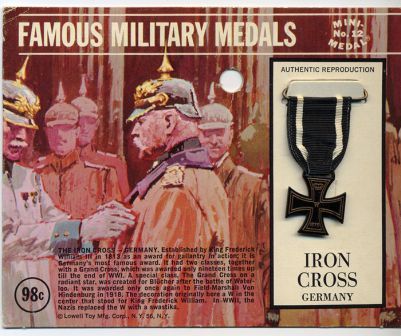
 0
0 -
Thanks Tony, I confirmed that it's a tad over 6" in diameter or about 155 mm.
0 -
Base markings
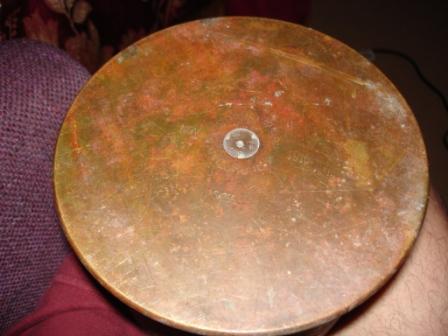


 0
0 -
Found this at an antique shop today. It has been previously been used as a flower pot. It measures about 6 inches across.
Here are pictures and the markings.

 0
0 -
Do the medallions from the Paris mint carry a mint mark?
0 -
Sompelace... in an earlier thread?... we had TRIED to come up with known dates with serial numbers.
"Ministry" means 1946+. Looks fine to me. These are lovely badges for important work.

Ah, here is that thread:
http://gmic.co.uk/index.php?showtopic=952&...cellent+Railway
looks like your badge is one of the very last awarded in this style, about 1957 or so.
Thanks Rick. This is quite a nice badge
 0
0 -
Many thanks for taking the time to photograph this for us, Charlie. What a smashing example. I`ll have to keep my eye out for ones made into jewellery. Just out of interest where did you pick this one up? I wouldn`t be to put off by it being a relatively modern one, its still really nice, and who knows where its been & what its bought in the last 40 odd years? Might have been used during the Dhofar War to buy AK47 ammo for example. The imagination could run riot

Gordon.
I'm getting old and losing my memory, I don't know when or where I got this.
0




info ww2 us coast guard visor cap
in United States of America
Posted · Edited by coastie
Sorry to take so long in responding, I've been racking my brain as to where I've seen this before. The smaller verison of the insignia was used as
collar devices for SPARS (women Coasties) But they didn't use the large insignia at all for a hat device. So, what was it used for? Check this page in the Offical Coast Guard web site
http://www.uscg.mil/history/uscghist/USCG_...Photos_1941.asp
You will see in the article a CPO that was a surfman apparently used the same hat device as the enlisted. This could explain why it's on a khaki hat.
So bottom line it appears you have a unique CPO hat.
Here is a picture of an enlisted man in a surfman's uniform.